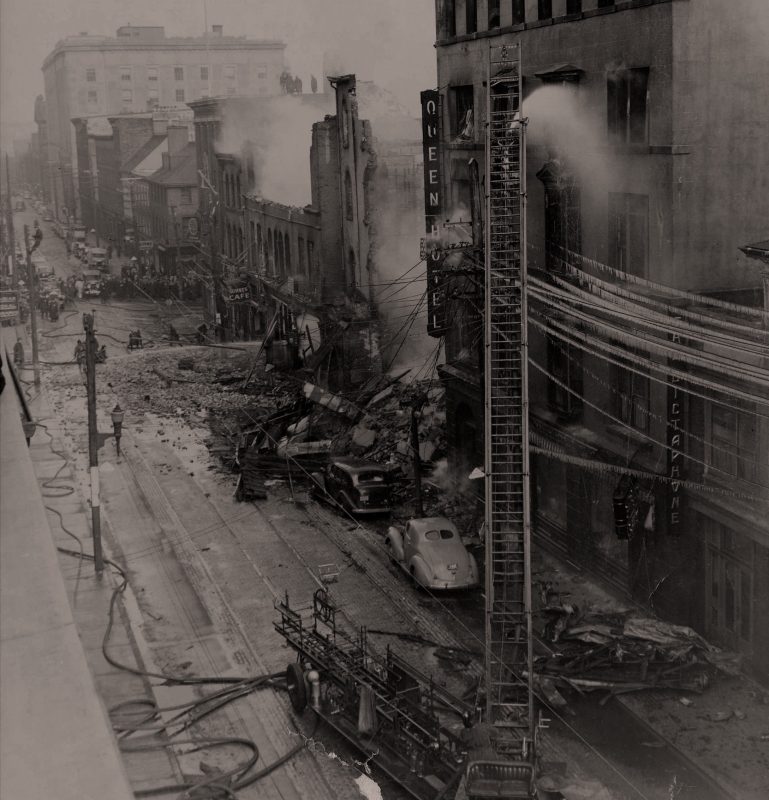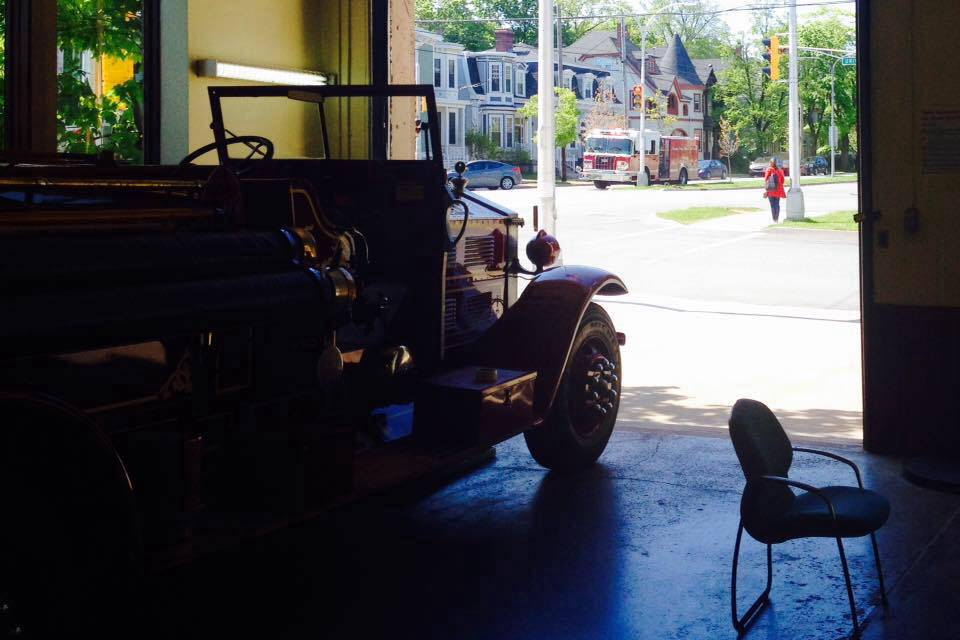Firefighting
The Queen of Fire Station 2
Firefighting memorabilia doesn’t have its own museum

caption
Firefighter and member of the Halifax Fire Historical Society Jeff Brown standing next to The Queen.Firefighters call her The Queen.
She is an 82-year-old fire truck that got her name from fighting the Queen Hotel fire of 1939, which claimed the lives of 28 people — the greatest loss of life since the Halifax Explosion.
“She pumped (water) for over 20 hours straight at that fire, remarkable for a piece of equipment from that era,” says Jeff Brown, a firefighter at Station 2, and member of the Halifax Fire Historical Society. “That’s a task on any vehicle to work that long and that hard (pumping water) — let alone something from 1934.”

caption
The Queen Hotel fire of 1939 that claimed the lives of 28 people, The Queen can be seen in the back left corner.The Queen worked for Halifax until the 1960’s, and then served as a hearse for countless firefighter funerals — referred to as their final ride.
The Queen and a treasure trove of other firefighting artifacts have a home at Halifax Regional Fire and Emergency Station 2 on University Avenue.
“We’re temporarily storing stuff here now; we want to have a dedicated museum eventually,” says Brown.
History adding up
Along with The Queen, historical documents, photographs, and firefighting artifacts are housed at the station.
One of the more significant items is half of the steering wheel from Patricia, the first motorized pumper in Canada. The other half of the wheel was lost in the Halifax Explosion when crew member Billy Wells was thrown from the truck as it responded to the ship on fire.
A Dec. 6, 1967 Chronicle Herald article (which hangs on the wall in Station 2) said Wells was knocked unconscious by the blast. He awoke in time to brace for the tsunami that resulted from the explosion. Wells survived all that — still clinging to half of the wheel.
That’s not the only connection to the Halifax Explosion at Station 2. There’s also a steam engine — named The Lulan, after a local Mi’kmaq Chief — that dates back to 1877. The Town of New Glasgow sent the engine to help after the explosion.
Brown found the steam engine when he went to New Glasgow in search of firefighting history, “she was sitting there looking beautiful,” he says of The Lulan. “We were like little kids on Christmas morning when we saw her.”
New Glasgow was struggling to keep the engine in good condition, and gave it to the Halifax Fire Historical Society on permanent loan.
Public interest
Come summer and tourism season, Brown says Station 2 gets visitors practically every day.
“People get off the cruise ships and they beeline for this firehouse,” Brown says. “There’s a lot of fire nerds around the world and they love coming for this stuff.”
It’s not just the artifacts that merit a firefighting museum in Halifax, says Brown.
“We (Halifax) have had more firefighting firsts than anyone else in Canada. The first steam engine, the first firehouse, first pumper truck, and we are the oldest fire service in Canada.”

caption
The Queen looks out at University Avenue, as a new fire truck drives down Robie Street.When asked about the potential for a firefighting museum, Deputy Fire Chief Dave Meldrum says there are no immediate plans for one.
“We are proud to be known as the oldest organized fire department in the country, and we would be thrilled to have an opportunity to show that off in any formalized museum that might eventually come to fruition,” he says.
For now, Halifax’s firefighting history will be kept under the watchful eye of the firemen and women of Station 2.

